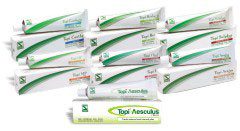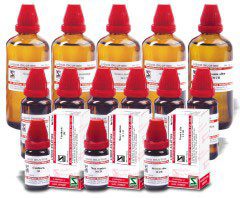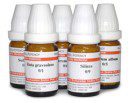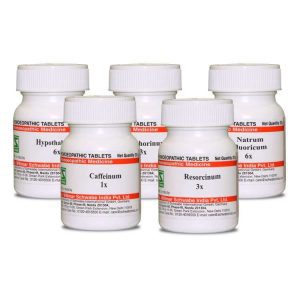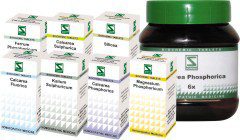Doctors Zone
Journal (JEBH)
Alpha™- Liv Drops
Alpha – Liv Drops Due to high demand from the market, for a formulation in drops for the liver, apart from the syrup already available in the market, Schwabe India developed this product. Introduction The liver plays a key role in metabolism. It has anabolic and catabolic, exocrine and endocrine functions. The liver is a blood reservoir, filter and store of different substances (e.g. glycogen, vitamins). It is the site of serum protein (e.g. albumin, prothrombin, fibrinogen) and enzyme synthesis. Metabolic processes (e.g. bilirubin, hormone, carbohydrate and lipid turnover) and the removal of toxic products are important liver functions. 1 Hepatotoxins (e.g. alcohol, tetracycline, acetaminophen, fungal toxins, and anabolic steroids) can cause specific damage to liver cells. Toxic hepatitis may be clinically silent or severe enough to lead to the rapid development of hepatic failure. Clinical features include hepatomegaly, enzyme abnormalities, fever, abdominal pain, anorexia, nausea, vomiting and weight loss. In patients with underlying cirrhosis, manifestations of portal hypertension may predominate. Aversion to fatty food, abdominal discomfort, nausea and vomiting after meals may be symptoms of 2 cholelithiasis. Jaundice results from accumulation of bilirubin. It has non-hepatic as well as hepatic causes. Hyperbilirubinaemia may be due to abnormalities in the 3 formation, transport, metabolism or excretion of bilirubin. TM Alpha -Liv Drops aids recovery and normalisation of liver functions. Severe liver disease needs specialised treatment. Indications: Slow liver functions, fatty liver, and for supportive treatment of hepatocellular jaundice and toxic liver damage.

Research News – Broniya alba – Genus epidemicus of Chikungunya – Schwabe India
Broniya alba – Genus epidemicus of Chikungunya
To frame out usefulness of Bryonia alba 30CH as genus epidemicus for prevention of chikungunya epidemic, a cluster- randomised, double blind placebo controlled trail has been conducted in Kerala in August-September 2007 in three panchayats of two districts. 167 clusters were selected and Bryonia alba 30C/placebo randomly given. Among 167 clusters 84 has took Bryonia alba 30CH and 83 has took placebo out of which 158 clusters has been analyzed (Bryonia alba 30C = 82 clusters; placebo = 76 clusters). Healthy participants were eligible for the study (Bryonia alba 30 C n = 19750; placebo n = 18479). Weekly follow-up was done for 35 days. Infection rate in the study has been compared and analysed with by use of cluster analysis. The analysis showed that 2525 out of 19750 persons of Bryonia alba 30 C group suffered from chikungunya, compared to 2919 out of 18479 in placebo group. Cluster analysis showed significant difference between the two groups. The result reflects a 19.76% relative risk reduction by Bryonia alba 30C as compared to placebo. Hence, Bryonia alba 30CH is better than placebo in deceasing chikungunya incidence. The efficacy of genus epidemicus needs to be replicated in different epidemic settings.
Reference: KR Janardanan Nair, S Gopinadhan, TN Sreedhara Kurup, Bonthu Sundara Jaya Raja Kumar, Abha Aggarwal, Roja Varanasi, Debadatta Nayak, Maya Padmanabhan, Praveen Oberai, Hari Singh, Vijay Pratap Singh, Chaturbhuja Nayak, Homoeopathic Genus Epidemicus ‘Bryonia alba’ as a prophylactic during an outbreak of Chikungunya in India: A cluster -randomised, double -blind, placebo- controlled trial, Indian Journal of Research in Homoeopathy, Year:2014, Volume:8, Issue:3, Page:160-165.
Recent Advancements in Basic Homeopathic Research – A Reporton Two Significant Publications
Author: Snigdha Suman Dalua , Praveen Kumar Singh In a study conducted at the Experimental Farm of the State University of Santa Catarina, Brazil, researchers investigated the impact of homeopathic treatments on piglets during the nursery phase. The study aimed to determine whether homeopathic agents could reduce fighting behavior, improve growth performance, and affect hematological, metabolic, and oxidative variables.
Journal of Evidence Based Homeopathy Volume: 1, Issue: 1, January - June 2023
Comprehensive articles

Agrohomeopathy – A Review
Short cases

Unmasking the Intricacies: A Pyogenic Abscess Case Report

Lichen Simplex: A Singular Case Study

Ranula Unveiled: A Case Report and Management Approach

Lichen Simplex: A Singular Case Study

A Puzzling Presentation: A Case Report of Jaundice
Recent provings and updated materia medica

Acidum Formicum

Mygale

Thea Chinensis
Materia medica on phytohomeopathy

Chrysarobinum

Sanguinarinum nitricum

Thiosinaminum
Mother tincture

Asparagus Officinalis

Ginkgo Biloba

Rosmarinus Officinalis
Product watch

Alpha™- Liv Drops

Good Morning™ Constipation Drops

Zauber™ Hair Drops
Research News

















